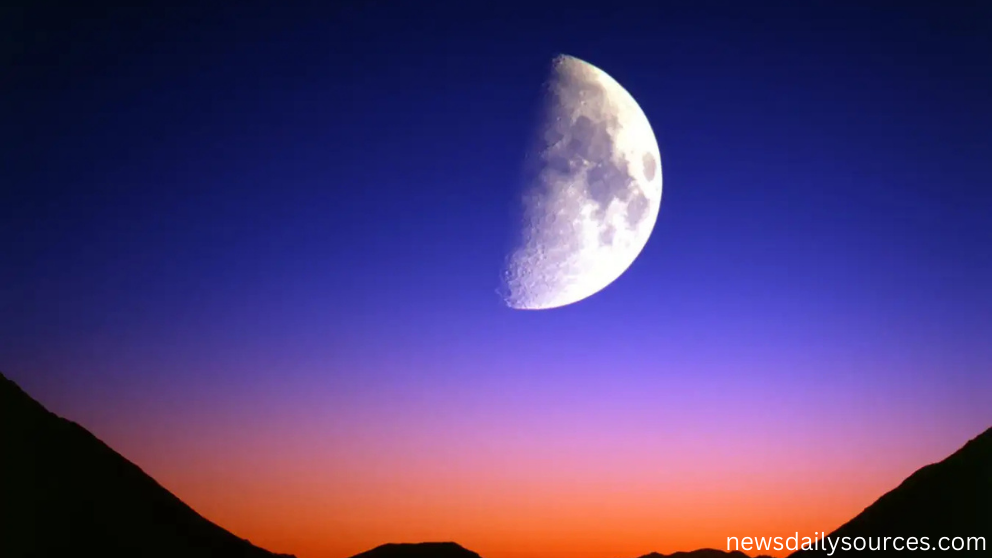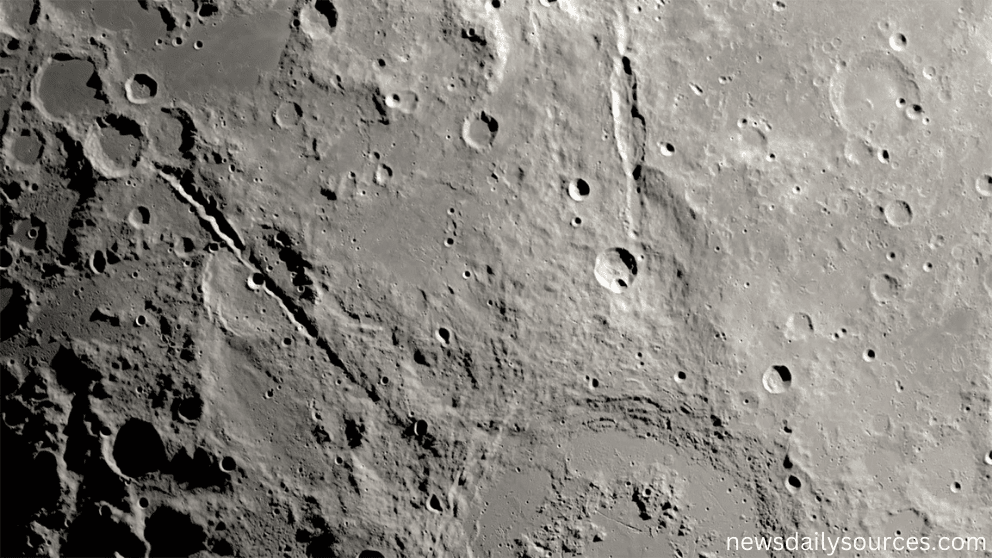The Moon has long fascinated scientists, astronomers, and space enthusiasts. Its surface, marked by craters, valleys, and deep trenches, tells the story of cosmic events that shaped its appearance. Among the most intriguing features of the Moon are its Grand Canyons—deep, massive chasms that were formed by violent impacts. Unlike Earth’s canyons, which took millions of years to develop, recent research suggests that the Moon’s Grand Canyons were formed in less than 10 minutes. But how is that possible? This article explores the rapid formation process, the science behind these formations, and their significance in understanding planetary evolution.
Understanding the Moon’s Grand Canyons
The Moon is home to several enormous rifts, some of which rival Earth’s most significant geological features. These vast trenches, often referred to as lunar canyons, are a result of asteroid and comet impacts. Unlike the slow-moving erosion that forms canyons on Earth, the Moon’s surface lacks atmosphere and liquid water, leading to a very different formation process.
How to Do Grand Canyons Form on the Moon?
On Earth, canyons like the Grand Canyon in Arizona are primarily shaped by erosion from rivers over millions of years. However, the Moon’s Grand Canyons are believed to have formed through:
- Asteroid and Cometary Impacts: High-speed collisions with celestial bodies create shock waves that instantly carve deep trenches.
- Tectonic Activity: Some lunar canyons are a result of internal stresses that crack the Moon’s crust.
- Thermal Expansion and Contraction: The extreme temperature shifts on the Moon cause its surface to expand and contract, sometimes leading to fractures.
Evidence of Rapid Formation
Studies conducted using data from lunar missions, such as NASA’s Lunar Reconnaissance Orbiter, reveal evidence that suggests these massive chasms were formed almost instantly. The evidence includes:
- Shock Wave Modeling: Computer simulations indicate that when an asteroid impacts the Moon at high velocity, the resulting shock wave creates canyons within minutes.
- Absence of Erosion: Unlike Earth’s canyons, the lack of wind and water erosion means these structures remain essentially unchanged since their formation.
- Surface Fracture Patterns: The arrangement of the canyons and surrounding craters suggests they were formed by single catastrophic events rather than slow geological processes.
Key Lunar Grand Canyons
Several canyons on the Moon showcase the rapid and violent nature of its geological history. Some of the most significant ones include:
Vallis Schrödinger
Located in the Schrödinger Basin, this canyon-like feature is thought to have formed in a matter of minutes due to a massive impact.
Rima Ariadaeus
A linear rift over 300 kilometers long, Rima Ariadaeus is a prime example of how lunar surface stress can rapidly create deep fractures.
Rimae Sirsalis
One of the longest lunar canyons, it formed through tectonic activity and impact events.
The Role of Cosmic Collisions in Canyon Formation
The Moon’s surface bears the scars of countless collisions. Unlike Earth, which has an atmosphere to break up incoming objects, the Moon is constantly bombarded by space debris. These collisions play a crucial role in shaping its canyons.
High-Speed Impacts and Shock Waves
When an asteroid traveling at tens of kilometers per second strikes the Moon, it releases an immense amount of energy. This energy creates:
- Instantaneous Melting and Vaporization: Parts of the lunar surface liquefy and evaporate.
- Expanding Shock Waves: The ground ripples outward, creating fractures and deep chasms in less than 10 minutes.
- Ejecta Deposits: The displaced material is scattered across the surface, forming secondary craters and ridges.
Why Doesn’t Earth Experience Similar Rapid Canyon Formation?
Earth’s atmosphere, weather systems, and geological processes significantly alter the impact of cosmic collisions. Instead of instant canyons, Earth experiences:
- Erosion-Filled Craters: Most impact craters on Earth are quickly eroded by wind and water.
- Tectonic Reworking: Earth’s active plate tectonics recycle the crust, erasing impact scars over time.
- Atmospheric Protection: The majority of incoming asteroids burn up before reaching the surface.
Scientific Missions Studying Lunar Canyons
Multiple space missions have helped uncover the mystery behind the formation of the Moon’s Grand Canyons. These include:
- Lunar Reconnaissance Orbiter (LRO): Captures high-resolution images of the lunar surface to analyze geological features.
- Apollo Missions: Provided first-hand observations of lunar surface structures.
- Chandrayaan-2: An Indian mission that mapped detailed topographical features of the Moon.
Implications for Future Space Exploration

Understanding how quickly lunar canyons formed has implications for planetary science and space missions. Key takeaways include:
- Insights into Impact Physics: Helps scientists predict how asteroid impacts affect planetary surfaces.
- Lunar Base Planning: Understanding these formations is crucial for selecting safe locations for lunar bases.
- Mars Exploration: Studying the Moon’s impact-formed canyons may provide insights into similar structures on Mars.
Frequently Asked Questions (FAQs)
How do the Moon’s Grand Canyons differ from those on Earth?
The Moon’s canyons formed almost instantly due to impacts, while Earth’s canyons take millions of years to develop through erosion.
What caused the rapid formation of lunar canyons?
Asteroid and comet impact created powerful shock waves that instantly carved deep trenches into the lunar surface.
How long does it take for a lunar canyon to form?
Studies suggest that lunar canyons can form in under 10 minutes due to high-velocity impacts.
Are there canyons on other celestial bodies?
Yes, Mars and some moons of Jupiter and Saturn also have impact-formed canyons.
What is the largest canyon on the Moon?
Rimae Sirsalis is one of the longest-known canyons on the Moon.
Can humans explore the Moon’s Grand Canyons?
Future lunar missions may explore these canyons to study their formation and gather geological samples.
Could similar impacts happen on Earth?
Yes, but Earth’s atmosphere and geological processes prevent rapid canyon formation from impact.
How do scientists study the Moon’s Grand Canyons?
Space missions like the Lunar Reconnaissance Orbiter provide high-resolution imaging and topographical data.
Conclusion
The Moon’s Grand Canyons are a testament to the power of cosmic events. Unlike Earth’s slow-forming canyons, these massive chasms appeared in mere minutes due to the violent impact of asteroids. Scientific research continues to uncover the mysteries of these fascinating structures, providing valuable insights for future space exploration.

